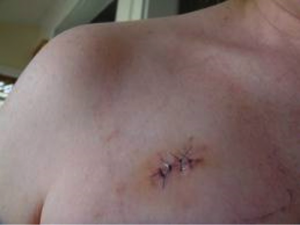 While moles are generally harmless, there are times that moles can be irregular in shape as well as continue to grow on a consistent basis. This means there might be something happening in your body that needs to be examined by a doctor. While the mole itself might be harmless, there are many people who want to decrease the chances of the mole becoming harmful by having it removed.
While moles are generally harmless, there are times that moles can be irregular in shape as well as continue to grow on a consistent basis. This means there might be something happening in your body that needs to be examined by a doctor. While the mole itself might be harmless, there are many people who want to decrease the chances of the mole becoming harmful by having it removed.
Moles are removed by an excision procedure or by having them shaved off with a scalpel blade. No matter which way the doctor decides to remove the scar, there is still a chance of scarring after its removal. Want to prevent scarring from happening after the mole removal procedure? Here are some tips to help you prevent scaring:
1. Listen to your doctor because a mole can cause scarring no matter how big or small the size of the mole. The doctor will give you specific instructions on how to care for the wound including how to clean it and change the dressing. These aftercare tips are vital in reducing and even completely preventing scarring.
2. Keeping the wound clean stops bacteria, debris and infections from forming in the wound. Keeping the skin moisturized is also vital in preventing scars from forming where the mole was removed. Wait until the surgery wound has started to scab before you start the moisturizing process.
3. Massaging the surgical wound is a big help in preventing scarring. Massaging any area of the body actually increases the circulation of blood in the area of the body being massaged. Massaging the area where the wound is located will help prevent the formation of a scar.
4. Stay out of the sun after your mole removal surgery. Too much exposure to the sun following a surgical procedure can lead to scarring. It is best to either stay out of the sun, until the wound is completely healed. If that is not possible, keep the wound covered when going outside. The UV rays from the sun can damage the skin and also delay the overall healing process after surgery. If being out the sun can’t be avoided, be sure to wear a high SPF sunscreen no matter what time of year it is.
5. A healthy lifestyle is also important in preventing scarring from happening after the mole removal procedure. While eating healthy and drinking plenty of water is not guaranteed to prevent scarring, it certainly increases the chances of a scar not forming as well as helping you lead an overall healthy lifestyle. When it comes to your food intake, give yourself plenty of vitamins and minerals with each meal so the nutrients can help your body heal properly.
6. Exercise is not recommended immediately after surgery. The area where the mole was removed is also the home of the stitches that will be placed post-surgery. Too much exercise can cause the stitches to tear which can cause the wound itself to open again. Also, too much exercise can cause sweat that can enter the wound. The sweat can irritate the wound and also cause an infection.
Mole removal surgery is helpful in removing both elevated and flat moles. By following the proper post-surgery steps listed above, the chances of a scar forming are lessened. If you have any further questions or concerns about mole removal, please consult with an experienced doctor in your area.

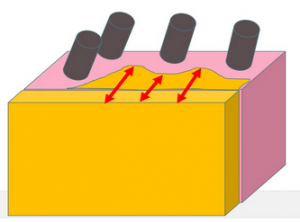 Scar tissue and the transection of the lower portion of hair follicles, on the edge of the scar, are what cause the lack of hair in the scar.
Scar tissue and the transection of the lower portion of hair follicles, on the edge of the scar, are what cause the lack of hair in the scar. 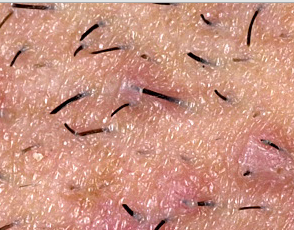 Just like what is seen with pimples, when one has an ingrown hair, it produces a small raised red bump. That bump will be itchy and many times might be sore to the touch. Treatment for ingrown hair may not be necessary at all times because ingrown hair sometimes tends to go away on its own. However, if the ingrown hair does not go away, it is best to treat it as it may leave a dark spot or scar on your skin. If an ingrown hair becomes infected, a doctor’s visit is necessary where they can safely use a needle to release the hair.
Just like what is seen with pimples, when one has an ingrown hair, it produces a small raised red bump. That bump will be itchy and many times might be sore to the touch. Treatment for ingrown hair may not be necessary at all times because ingrown hair sometimes tends to go away on its own. However, if the ingrown hair does not go away, it is best to treat it as it may leave a dark spot or scar on your skin. If an ingrown hair becomes infected, a doctor’s visit is necessary where they can safely use a needle to release the hair. 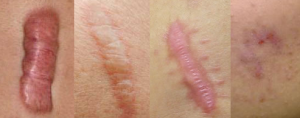
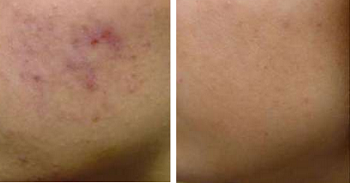 Microdermabrasion is a popular procedure being done to help reduce the appearance of acne scars. This procedure also leaves ones skin looking brighter and softer. It can be performed with all skin types and tones.
Microdermabrasion is a popular procedure being done to help reduce the appearance of acne scars. This procedure also leaves ones skin looking brighter and softer. It can be performed with all skin types and tones.